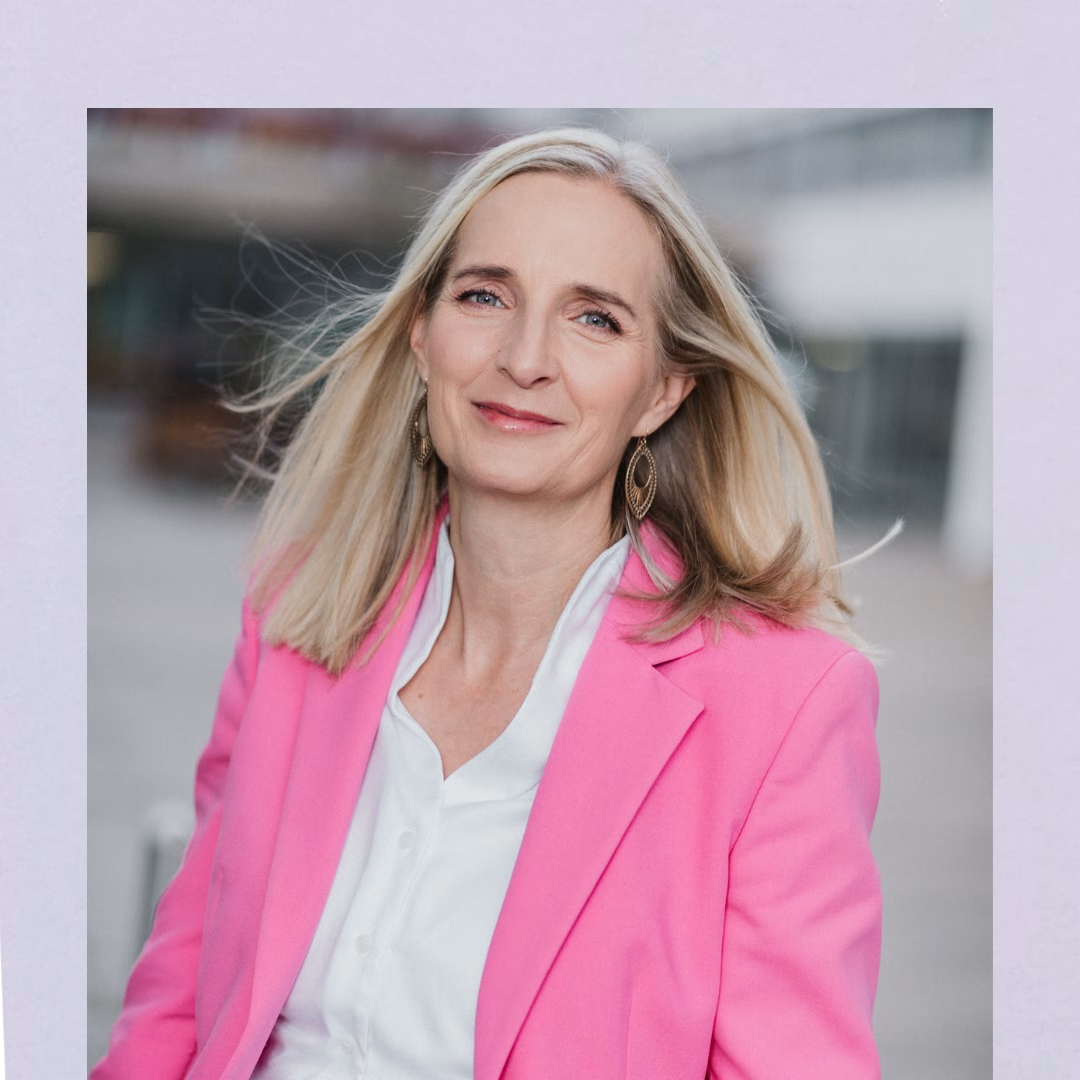I talk to Eveline Breitwieser-Wunderl (Diversity & Inclusion @ Porsche Holding) about the topic of empowerment. A particular focus in our conversation is on female empowerment in the male-dominated automotive industry.
Dear Ms. Breitwieser-Wunderl, you often post topics on the subject of empowerment. I would like to ask you about your own experiences, what you think about the topic and how you live it yourself, including within the company?
“As a woman in the automotive industry”, that was interesting at the beginning of my career, Ms. Breitwieser-Wunderl begins our conversation. At the beginning of your career as a young woman, you hardly notice the existing hurdles – equality seemed self-evident. As you get older, gender inequalities become apparent – in particular structural differences in the career paths of women and men become more visible.
A personal turning point for Ms Breitwieser-Wunderl was her own promotion in 2018, which made her more aware of the issue of empowerment. The support from other women in the company was particularly influential for her – older colleagues as role models and a strong female network.
She emphasizes the importance of empowerment and targeted support for women, as many women hesitate to take on management roles despite their potential – often due to insecurities and a lack of confidence (“Am I too old?”, “My children are too young?”). Ms Breitwieser-Wunderl emphasizes the importance of making female talent visible in the company. Many of these women would remain “under the radar” without active support and targeted empowerment.
A good example of this is an internal selection process for candidates for HR development programs at Porsche Holding: we have changed the entire internal selection procedure for filling management positions:
Initially, nominations by managers led to a low proportion of women. It was only through the introduction of self-nominations and targeted active approaches by managers and HR that the proportion of women in the programs increased significantly. Today it is 50/50.
A current external example of the importance of visible role models for Ms. Breitwieser-Wunderl is a social media post by a Swiss pilot: in one post, she explains that she was inspired by a talk given by another female pilot when she was 15 – a formative experience that determined her career choice. ” Role models like this are essential for young women and girls to see and follow new paths,” Ms. Breitwieser-Wunderl explains.
Ms. Breitwieser Wunderl has initiated a role model campaign to make female managers in the Porsche Holding more visible – especially those who have already had successful careers in the company but are less visible in public. Although the top management level is not yet 50:50, diversity is already actively practiced in the company.
A new initiative called “Open Doors” gives employees the opportunity to exchange ideas with top managers in an uncomplicated way. The aim is to reduce fear of contact, make role models tangible and provide personal insights into management careers – in a very low-threshold and effective way. Young colleagues in particular should be encouraged to ask questions: “How did she do it, how did she get there and how is she doing with it,” says Ms. Breitwieser-Wunderl.
How far do your initiatives for empowerment penetrate the entire company? How is participation in other areas?
The targeted promotion of women in the company began in 2018 with the creation of a dedicated position for diversity. Since then, measures have been continuously built up, which are now – “after seven years – showing the first clear signs of success. This is also in line with the general experience that diversity programs take around six to eight years to have a lasting effect,” explains Ms Breitwieser-Wunderl.
A key success factor was the introduction of a women’s quota, which served as a catalyst. Even if it is “not a panacea”, as Ms. Breitwieser-Wunderl emphasizes, and should be dropped in the long term, it has created the necessary pressure to initiate change. Before its introduction, qualified women were barely present in selection procedures – they were simply not noticed – not on purpose, but because managers in large organizations cannot know all the high-potential women. She therefore believes that HR and business partners in particular have a responsibility to recognize, make visible and promote talent. Today, it is a matter of course that equally qualified women are represented in selection rounds, which gives them a realistic chance of obtaining management positions.
Over time, awareness in the organization has changed. Whereas initially HR actively put women “on the radar”, managers now independently look out for their female talents and actively include them in succession and development discussions. In some cases, a kind of internal competition has even emerged to see who can nominate the most women for management roles.
A lot has also changed structurally: Part-time management is possible, returning to work after parental leave is made easier by interim management, and new working models are emerging. This shows that diversity is now not just a theoretical goal, but a lived reality in the company. It is particularly remarkable that young women already take these advances for granted – even though they are the result of years of intensive work.
An important paradigm shift was to see diversity not as an individual task, but as a management responsibility for everyone. The motto is: “Every manager is also a diversity manager. This means that the topic is more broadly anchored and has a more sustainable impact,” says Ms. Breitwieser-Wunderl.
Cultural change is understood as a long-term process – a marathon, not a sprint. Implementation is based on a deep understanding of the organizational structure and culture as well as targeted change work, e.g. through “unconscious bias training”. As a result of the increased visibility of women in management, the corporate culture is also changing step by step – slowly but noticeably.
How do you notice the cultural change brought about by women in leadership?
A central topic of the discussion is the observation of how women in management positions shape and change the company – especially when they have long-term responsibility. One example of this is the Managing Director in China, who has not only played a decisive role in shaping the business, but has also built up a proportion of women in management positions of over 25%. Another female colleague, who was Managing Director in Romania for many years and has now been Managing Director in Spain for several years, has also actively contributed to the advancement of women and ensured that gender parity is implemented more strongly in the company.
It becomes clear that women often shape leadership differently. Although the challenges in day-to-day business are the same for everyone, regardless of gender, there are some differences in how they are dealt with. Women are considered to be more open, more honest in dealing with problems and often more resilient. These characteristics are seen as great strengths.
Another point is the corporate culture in women-led teams: In training sessions and workshops, it is noticeable that a non-hierarchical, open space is created very quickly among women, in which an exchange at eye level is possible – regardless of status. Men, on the other hand, tend to position themselves in terms of roles and status before a real exchange begins. This observation shows how differently social dynamics can develop – offering potential for new formats and changes in perspective.
In order to further develop these differences and strengths together, an international women’s network was established within the company . Female managers, in particular managing directors, meet regularly to discuss challenges and experiences. From the outset, it was particularly important to involve male managers as well. The aim was not to isolate themselves as a group of women, but to change the organization together.
In the autumn, new mixed formats are to be launched in which male and female managing directors come together specifically to discuss leadership behavior, challenges and different perspectives. The focus here is on mutual learning and a conscious change of perspective – not only to promote women, but also to further develop the entire corporate culture.
In our interview, Ms Breitwieser-Wunderl emphasizes how valuable mixed leadership formats are, in which men and women work together on leadership topics. The focus should not be on differences, but on a shared understanding of “good leadership” – under the title “One Leadership”. It’s about exchanging perspectives, listening and occasionally putting your own ego aside.
A central theme is the often unconscious imbalance that women feel in male-dominated management circles – for example, through increased energy expenditure or the feeling that they are always “playing away”. Men are often not aware of this imbalance. Formats such as the “inner circle/outer circle method” or consciously inviting men into women-only circles help to make this feeling tangible.
According to their observations, younger managers in particular have a greater awareness of diversity and equal opportunities. Nevertheless, there are differences in socialization, especially at middle management level, which often quickly adapts to existing male-dominated structures. Targeted impulses and role models are therefore needed to anchor change in the long term.
Your stress tip:
Ms Breitwieser-Wunderl emphasizes how important personal balance is for her resilience and leadership strength. She has been practicing yoga for many years, and breathing techniques in particular help her to stay mentally balanced. Over the years, she has learned various tools – such as consciously leaving the room, taking walks in the fresh air and prioritizing tasks – to keep calm in stressful situations.
She also talks about the need to adapt to the circumstances of a large, regulated company with patience and composure. Her focus is on working in a meaningful way and not losing sight of your own impact – even if some things move more slowly.
A central image is her metaphor of the “full cup”: Only those who take care of themselves can also be there for others. She passes on this mindful approach to her own energy to young women in particular, encouraging them not to neglect themselves.
Photo credit: Amir Kaljikovic





